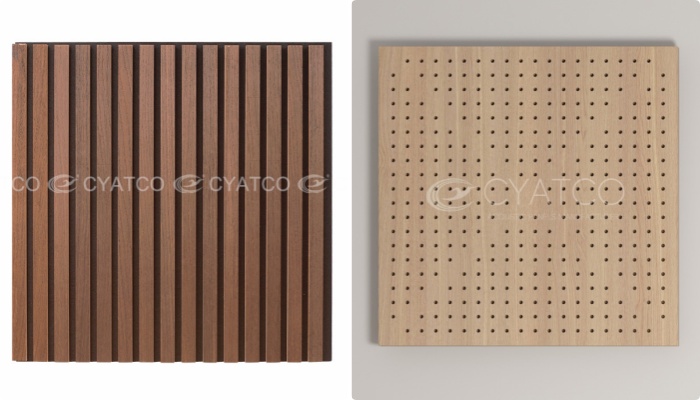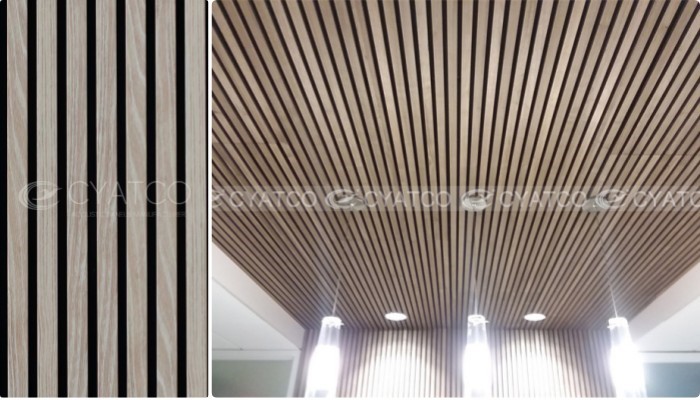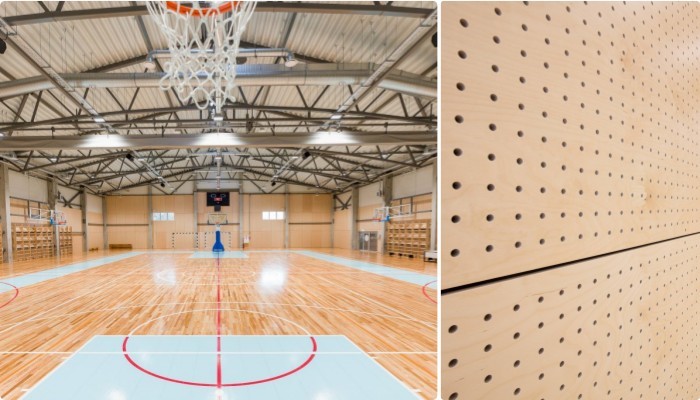Enhance Your Space with Wood Sound-absorbing Board
A quiet and comfortable environment has become increasingly important in today’s busy life. Whether it’s a home theater, office, school, or recording studio, a good acoustic environment is the key to enhancing the experience. Wooden sound-absorbing panels are gradually gaining popularity in the market as an efficient and aesthetically pleasing acoustic solution.
The working principle of wooden sound-absorbing board
Wood sound-absorbing boards mainly through their special structure and material characteristics absorb and reduce sound reflection, to achieve the purpose of improving the acoustic environment. There are many types of wooden sound-absorbing boards, and different types of wooden sound-absorbing boards can work differently. Wood acoustic panels are classified by material composition:
1, wooden slot sound absorption board.
It uses high-quality density board as the base material, and slots or perforates the surface of the plate through precision machining. This design not only retains the natural texture and color of the wood but also gives the board excellent acoustic properties. When the sound wave is incident on the surface of the wooden perforated plate, part of the sound wave is reflected, and part of the sound wave penetrates the hole into the interior of the plate, and experiences multiple reflections, scattering, and viscous losses in the hole and the internal cavity of the plate, and finally converts the sound energy into heat energy, to effectively absorb the middle and high-frequency noise, reduce the indoor reverberation time, and improve the language clarity.
2, wooden slat sound absorption board.
The wooden slat sound-absorbing panel is usually composed of two parts: the sound-absorbing substrate and the wooden slat panel. The sound-absorbing substrate is the core part, responsible for absorbing sound wave energy; Wooden slat panels decorate and change the path of sound transmission. When the sound wave encounters the surface of the wooden slat, part of the sound wave will be reflected, the part will pass through the wooden slat into the sound-absorbing substrate, and the other part will be refracted in the wooden slat gap. Acoustic substrates reduce indoor noise levels by absorbing acoustic energy through their porous structure or special materials, such as polyester fiber acoustic panels, converting them into heat or other forms of energy.
Application
The application scenarios of wooden sound-absorbing boards are very wide. In-home theaters and recording studios, can effectively reduce the interference of external noise and improve audio quality. In offices and schools, they can reduce conversation and machine noise, creating a more focused and peaceful work environment. In addition, in public places such as restaurants, libraries, and hospitals, wooden sound-absorbing panels can also significantly improve the acoustic environment and enhance the overall user experience.
Advantage
Wood sound-absorbing panels offer multiple advantages over other acoustic materials. First of all, their appearance is natural and beautiful, which can enhance the overall decorative effect of the space. Secondly, wood materials have good durability, long-term use will not be easily damaged or deformed. In addition, wood sound-absorbing panels are easy to install and low maintenance, making them a cost-effective acoustic solution.
How can I improve the efficiency of my space acoustic solutions
To maximize the effectiveness of wood sound-absorbing panels, the following tips can help improve the efficiency of your space acoustic solution:
- Reasonable layout: According to the specific needs of the space, reasonably plan the layout of the sound absorption board. For example, in a recording studio, sound-absorbing panels can be installed on walls and ceilings where sound waves are strongly reflected.
- Multi-layer structure: The use of multi-layer sound-absorbing panels of different materials can further improve the sound absorption effect. Combinations of materials of different densities can better absorb sound waves of different frequencies.
- Air layer design: Design a certain air layer behind the sound absorption board, which can further improve the sound absorption effect. The air layer can effectively block the propagation of sound waves and reduce the reflection of sound.
- Combined with other acoustic materials: Wood acoustic panels can be combined with other acoustic materials such as sound insulation foam, sound insulation felt, etc., to achieve a more comprehensive acoustic control effect.
Summary
Wood sound-absorbing panels are an efficient, aesthetically pleasing, and cost-effective acoustic solution for many different spaces and environments. Through reasonable layout and structural design, the acoustics of the space can be significantly improved to create a quieter and more comfortable environment for users. Whether it’s a home or commercial space, wood acoustic panels are a recommended acoustic improvement option.




